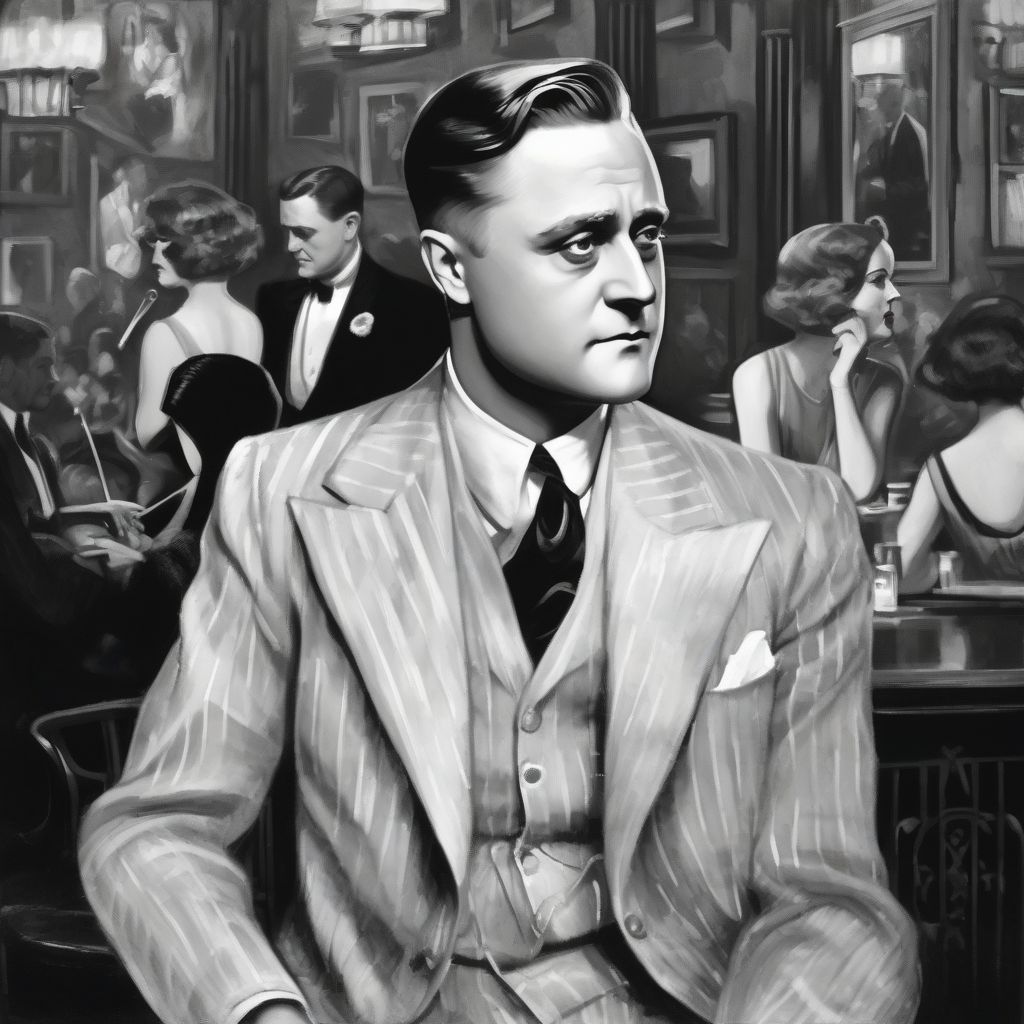The roaring twenties. Flapper dresses. Gin Rickeys. The Jazz Age, a period of unprecedented social and cultural change, left an indelible mark on American history. But who truly captured its essence, its excesses, and its anxieties? Look no further than F. Scott Fitzgerald, the literary chronicler of this era. His novels and short stories offer a vibrant, albeit sometimes critical, portrayal of the Jazz Age, reflecting its unique blend of glamour, disillusionment, and societal transformation.
The Rise of Consumer Culture and Materialism
Fitzgerald meticulously documented the rise of consumer culture during the Jazz Age. His characters, often affluent and restless, chased the American Dream through material possessions, lavish parties, and a relentless pursuit of pleasure. Think of Jay Gatsby, the enigmatic millionaire in The Great Gatsby, whose extravagant mansion and opulent fêtes symbolize the era’s obsession with wealth and status. Fitzgerald wasn’t simply glorifying this lifestyle; he also exposed its inherent emptiness and the moral decay that lurked beneath the glittering surface. “They were careless people, Tom and Daisy—they smashed up things and creatures and then retreated back into their money or their vast carelessness, or whatever it was that kept them together, and let other people clean up the mess they had made,” he writes, a poignant commentary on the recklessness and moral bankruptcy of the wealthy elite.
 F. Scott Fitzgerald and the Jazz Age
F. Scott Fitzgerald and the Jazz Age
The Shifting Roles of Women
The Jazz Age witnessed a dramatic shift in women’s roles, with the emergence of the “flapper,” a symbol of liberation and modernity. Fitzgerald captured this transformation through characters like Daisy Buchanan and Jordan Baker in The Great Gatsby. These women, though seemingly independent and liberated, are ultimately constrained by societal expectations and the patriarchal structures of the time. Their pursuit of pleasure and freedom is often tinged with a sense of disillusionment and a yearning for something more. This duality reflects the complex reality of women’s lives during the Jazz Age, a time of both progress and persistent inequality. As literary critic Judith Freeman notes, “Fitzgerald’s female characters, while embodying the flapper archetype, also reveal the limitations and contradictions inherent in that image.”
The Illusion of the American Dream
Fitzgerald’s work explored the allure and the ultimate disillusionment of the American Dream during the Jazz Age. Gatsby’s relentless pursuit of Daisy, his idealized vision of love and happiness, ultimately proves to be a tragic illusion. His vast wealth, acquired through illicit means, cannot buy him true love or acceptance into the old-moneyed elite. This theme resonates throughout Fitzgerald’s work, reflecting the growing sense of disillusionment and the realization that the American Dream, for many, remained unattainable. “He had come a long way to this blue lawn, and his dream must have seemed so close that he could hardly fail to grasp it,” Fitzgerald writes, highlighting the tragic gap between Gatsby’s aspirations and the reality of his situation.
The Impact of World War I
The shadow of World War I loomed large over the Jazz Age, and Fitzgerald, having served in the army, understood its profound impact on the generation that came of age during this period. The war shattered traditional values and created a sense of disillusionment and a yearning for escape. This is evident in the characters’ restless pursuit of pleasure and their often reckless behavior. They sought solace in the fleeting joys of the moment, attempting to drown out the lingering trauma of war and the uncertainties of the future. This “lost generation,” as Gertrude Stein famously dubbed them, found its voice in Fitzgerald’s writing.
The Allure of Alcohol and Excess
Prohibition, ironically, fueled the very excesses it sought to curb. Fitzgerald’s novels and stories are filled with lavish parties, flowing champagne, and the constant clinking of cocktail glasses. Alcohol became a symbol of rebellion and a means of escape, but it also contributed to the era’s moral decay and the tragic consequences that often followed. The wild, uninhibited atmosphere of these parties, so vividly depicted in Fitzgerald’s work, became synonymous with the Jazz Age itself.
The Power of Language and Style
Fitzgerald’s lyrical prose and evocative imagery perfectly captured the spirit of the Jazz Age. His writing style, characterized by its elegance and wit, mirrored the era’s sophistication and fast-paced energy. He coined phrases that have become synonymous with the Roaring Twenties, further cementing his status as the literary voice of this transformative period.
Conclusion
F. Scott Fitzgerald’s work provides a nuanced and insightful portrait of the Jazz Age. He captured its vibrant energy, its excesses, and its underlying anxieties, revealing the complex interplay of glamour and disillusionment that defined this era. From the rise of consumer culture to the shifting roles of women and the enduring allure of the American Dream, Fitzgerald’s novels and short stories offer a timeless reflection of a pivotal moment in American history. His characters, though flawed and often tragic, continue to resonate with readers today, reminding us of the enduring power of dreams, the allure of excess, and the complexities of the human condition. What are your thoughts on Fitzgerald’s portrayal of the Jazz Age? Share your insights in the comments below, and let’s continue the conversation.



